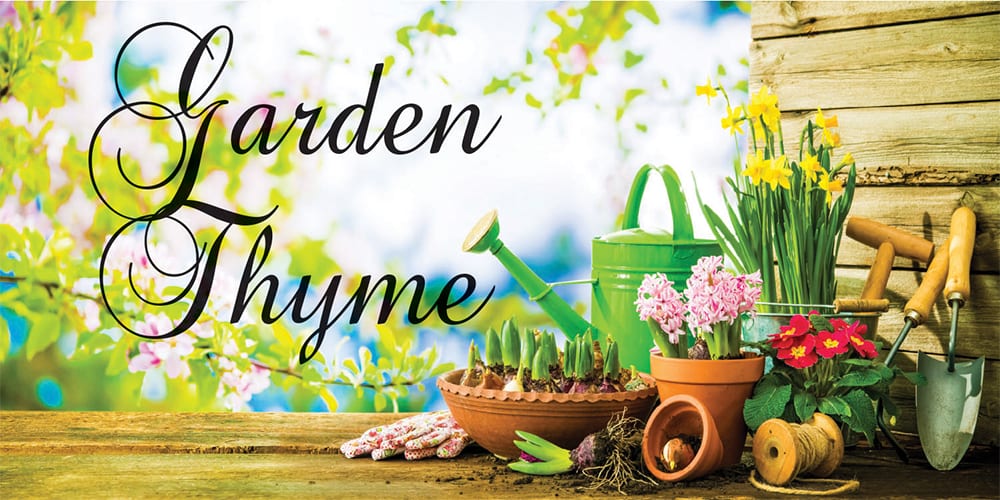To conserve and minimize water use on your lawn and in the landscape, homeowners have a variety of options. These options will reduce the overall use of water and can create a more environmentally friendly home landscape.
By conserving water and establishing low-water use, drought-resistant plantings, you will also reduce maintenance time and promote a more sustainable, low-input (less fertilizer, pesticide, and water) home lawn and landscape.
Principles of low-water use landscaping include water only when and where needed; improve your soil for optimum water holding capacity; use low-water demanding or native plants and consider reducing lawn size; apply organic/inorganic mulches.
Watering your lawn only when and where it is needed will also promote a healthier turfgrass. Remember that millions of acres of crops, such as grain crops, depend entirely on natural rainfall and grow successfully.
Everyone wants lush and green grass in their yards. However, watering is only necessary when rainfall does not occur for an extended period. Therefore, it is best not to water on a regular or daily schedule, but instead when rainfall is insufficient.
On a windy, bright sunny day, as much as 40 percent of sprinkler-applied water is lost to evaporation and does not benefit the lawn or plants. Early morning watering, during the hours of 4 a.m. to 8 a.m. is best to avoid plant diseases and conserve water, since this is generally when winds are calm and sunlight is less intense.
An average thunderstorm may provide 1/2–3/4 of an inch of water. Other storm events may produce more water.
To measure rainfall, use plastic rain gauge to check natural rainfall or put heavy empty containers (that will not blow over) on at least two areas of the lawn and measure rainfall amounts. If rainfall is sufficient, you may wish to turn off automatic sprinklers or stop watering for 4 to 7 days, depending on weather conditions.
Knowing when to water is very important. The best way to do this is to check your soil moisture periodically. Use a hand trowel to check the upper 6 inches of soil to see if soil is moist. This is easy and practical.
Being knowledgeable about the plant’s cultural requirements will include knowing its watering needs and drought tolerance. Cool season grasses generally require 1–1½ inches of water per week for optimum growth.
Some turfgrass varieties may take on a dull green color when water is needed. Another indication that it is time to water is when footprints remain in the grass for some time after walking across the lawn. Drought-tolerant lawn mixes for sun/shade are available at most garden centers.
To encourage drought-tolerance in your plants, gradually adapt them to infrequent but deep watering. Even for low water demanding varieties, it takes about two growing seasons for new plants to develop sufficient roots that grow deeper to withstand extended dry periods.
Most bluegrass lawns will go dormant during a drought and await rain to recover. However, some varieties of turfgrass may not recover from a long dry period.
If reseeding, consider a drought-tolerant turf-type tall fescue or hard fescue with some bluegrass in the mix.
Many types of residential irrigation systems help the homeowner apply the correct amount of water to trees, shrubs, and gardens. Drip irrigation and soaker hose systems provide a controlled flow of water directly to the plant’s root system and work best in planting beds. Wasted water due to runoff, over-spraying sprinklers, and evaporation is greatly reduced with drip irrigation or soaker hose systems.
These low water use systems will pay for themselves quickly in the cost of water and time you save. Systems are available which are easily installed by the homeowner. Drip and soaker hose systems are not feasible for lawns. However, there are efficient options for sprinkler systems in lawns.
Probably the most overlooked aspect of landscape water conservation is improving the soil for better water-holding capacity. In our area sandy loam soils dominate the landscape. However, there may be a diversity of soil types in the landscape, especially in new construction lots.
A good soil should be well-drained; hold nutrients, sufficient moisture, and allow for oxygen in the rootzone, and be the correct pH for the plants being grown. A soil pH of 6.5 is preferred for most turfgrass varieties.
Improving the soil by adding organic amendments such as compost or peat moss will help increase soil aeration, water retention, and microorganism activity, and moderate pH in most soils. This will enhance soil health and nutrient availability.
Adding organic matter to your lawn by topdressing with compost or other organic soil amendments at 1/4–1/3 of an inch per application will gradually improve soil texture, and reduce reliance on multiple applications of fertilizer, may reduce reliance on pesticides, and improve water retention.
Another water conservation method is to use low water demanding plants and minimize the lawn area. This will drastically cut water use on the home landscape.
Reducing the size of the lawn and using sound cultural practices to establish, maintain, and manage plantings will result in more efficient water use. Many ground covers thrive where grass does poorly and work well under dense shade or shallow-rooted trees.
If you home lawn is struggling, ask yourself some questions. Are you growing grass where grass is impossible to maintain? Are you trying to grow grass where active play tramples out all vegetation? Are you growing grass just because you cannot think of anything else to plant?
Perhaps try a new plan for your landscape by balancing lawn areas (active play and recreation areas) with other aesthetic and low-maintenance considerations. Remember: lawns require a lot of work. Consider these five factors for proper care and management:
Seed Selection: In the shade and under low-fertilizer conditions, fine fescue type grasses are the best option. Some bluegrass varieties are drought-tolerant. Bluegrasses are good in full sun and in well-drained soil, but require more water, fertilizer, and attention. Perennial ryegrasses and tall fescues in mixtures do well in full sun and in heavy traffic areas. Tall fescues take 1–2 years for adequate root development and before they tolerate heavy foot traffic.
Fertilizer and Lime: Do not overfertilize your lawn. Test your soil and determine its current pH, texture, and nutrient levels at least once every 2-4 weeks. Returning clippings to the lawn may reduce fertilization needs up to 50 percent, as decomposing grass clippings will recycle nutrients back to the soil.
Established fescue lawns can usually survive with only one feeding of fertilizer a year, preferably in fall. Fertilization ultimately depends on variety, turf quality desired, and the amount of turf maintenance desired.
Mowing: Mowing height is an important consideration during droughts and for turfgrass health. Lawns cut shorter than two inches are prone to browning out. By increasing mowing height and cutting less than 1/3 of the grass blade height will help avoid summer lawn scorching.
Watering: Water only when needed. A bluegrass lawn needs water when it takes on a wilted, faded blue appearance. Become aware of stress areas within the lawn, such as areas in competition with shade trees and shallow tree roots, compacted soil areas, and southwest facing embankments that receive the most sun exposure.
Make sure sprinklers water the lawn for the best efficiency, and are not directed to the street, driveway, or sidewalks.
Taking a multi-faceted approach to water conservation in the home landscape and in lawns is both money-saving and environmentally responsible.
by Michelle Casella











